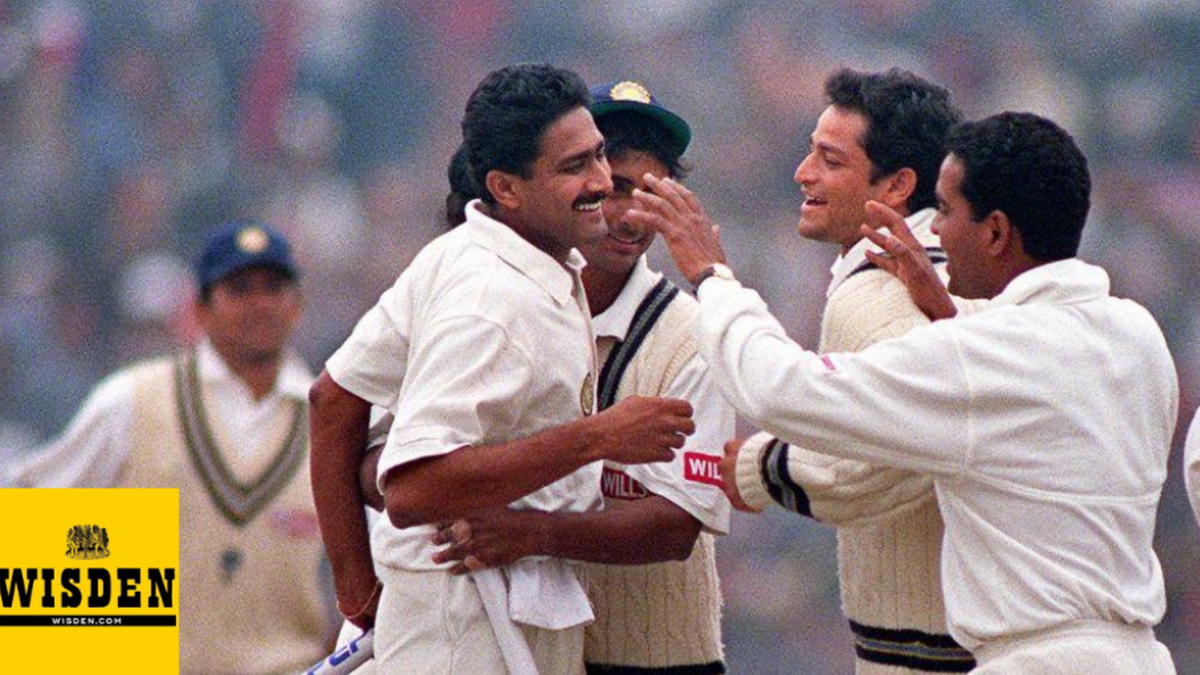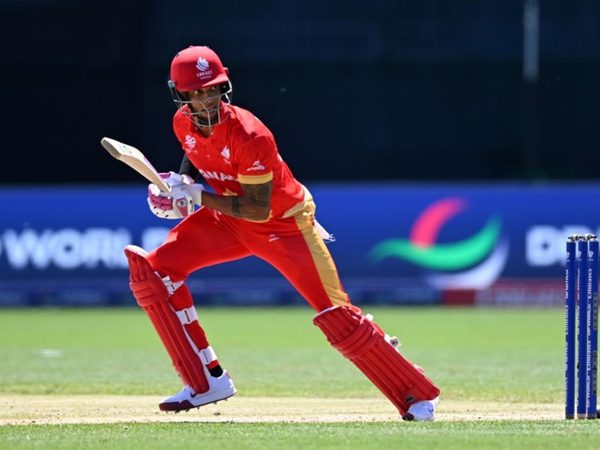
A week after their heartbreaking loss in Chennai, India’s turnaround was led by one man’s thumping retaliation, matching a 43-year-old feat with a perfect haul of ten. Aadya Sharma looks back at Anil Kumble’s historic 10-74, named Wisden’s Test spell of the 1990s.
Anil Kumble 10-74
India v Pakistan, 2nd Test
Feroz Shah Kotla Stadium, Delhi
February 4-7, 1999
The term ‘spinner’, in essence, hardly does justice to Kumble’s craft, who, on a smoggy February afternoon, typical of Delhi’s receding winters, exploded on a two-paced Kotla wicket with the gusto of a revved-up speedster.
The spell, 26 overs of deliveries kicking off the dusty surface, had all of Kumble’s tricks rolled into one. With a slip, silly point and short leg his constant companions, he claimed all his ten wickets bowled, leg-before, or caught around the bat.
Pakistan began their second innings needing to chase down 420 with two days in store, a mammoth ask, by all means. Saeed Anwar and Shahid Afridi’s blistering opening stand, however, shaved off 101 runs before lunch, giving Pakistan an unexpected upper hand. After the break, though, it was Kumble splashed all over the scoreboard.
The first breakthrough came off a dubious-looking caught-behind – Afridi was convinced that it was the bat brushing the pad – which was followed, next ball, by a yorker that almost took Ijaz Ahmed’s toe. The twin dismissals set the ball rolling for Kumble, who then fixed his channel, maintaining a flat, quick trajectory on the off stump, with his deceptive change of pace, and the vagaries of the Delhi pitch, doing the rest.
Soon after, Inzamam-ul-Haq chopped one on, and two balls later, Mohammad Yousuf presented his front pad for a plumb leg-before. For the next few hours, umpire AV Jayaprakash’s emphatic finger wiggle became a regular feature, closely followed by the cheer of the Sunday public.
Anwar, India’s age-old nemesis, stubbornly occupied one end, but his partners were far more meek, and, by the 36th over, Pakistan had half their side back at 127. Next over, Kumble made it six for India, and for himself, by sneaking out a bat-pad off Anwar’s defence to short leg. Skipper Wasim Akram, who had grown visibly agitated with each passing dismissal, walked out to partner Salim Malik next, purposefully attacking the young Harbhajan Singh, but it wasn’t anything more than a small consolation.
After a faster one, typical of Kumble’s quick, flat approach, crashed into Saleem Malik’s stumps, the tail didn’t stand much chance. The only question was whether one of Kumble’s teammates would inadvertently spoil his party. The tenth wicket has often proved elusive – 14 bowlers had stopped at nine, but only one had been able to go the full monty.
After a team chat, Javagal Srinath hurled an over full of wides to ensure that the last pair stayed intact for Anil Kumble to devour, but Sadagoppan Ramesh didn’t seem to be privy to the team’s plans, almost snaffling a top edge. Five balls later, an inside edge off Wasim Akram was sharply captured at short leg, and an ecstatic Kumble was on top of his teammates’ shoulders.
Aside from its statistical brilliance, the dream haul sits at the apex of Jumbo’s stature as, arguably, India’s greatest Test match-winner.








